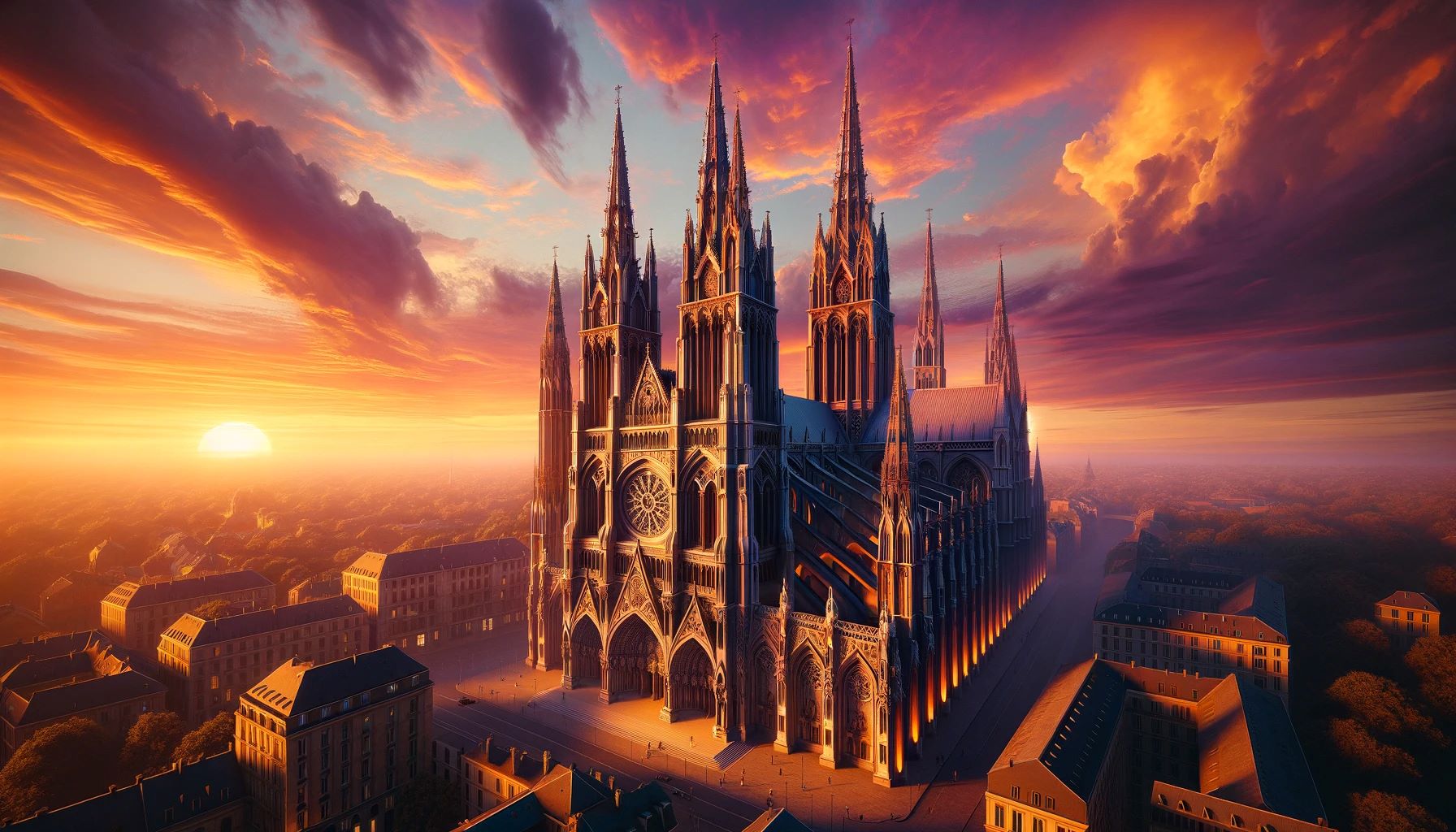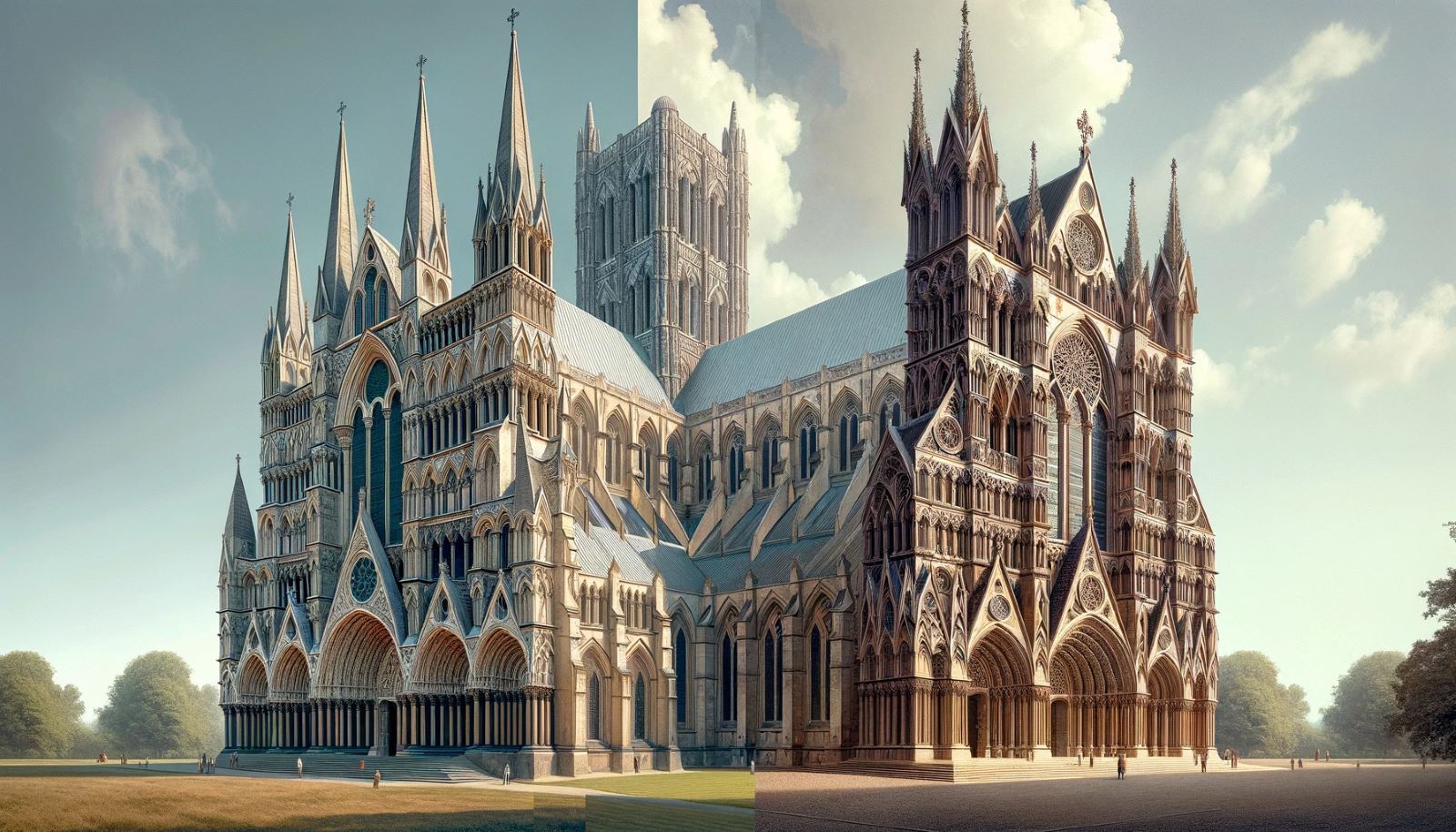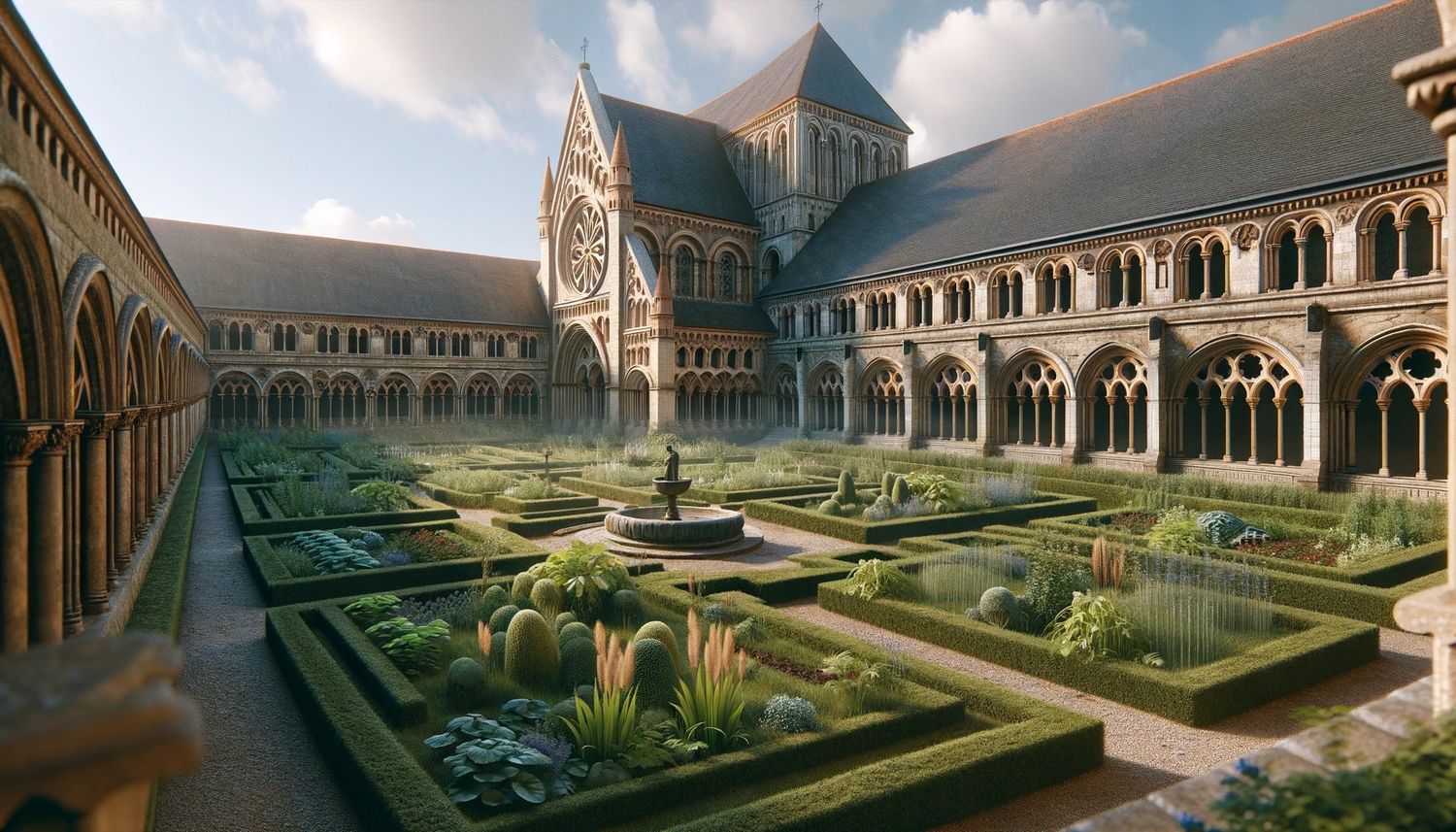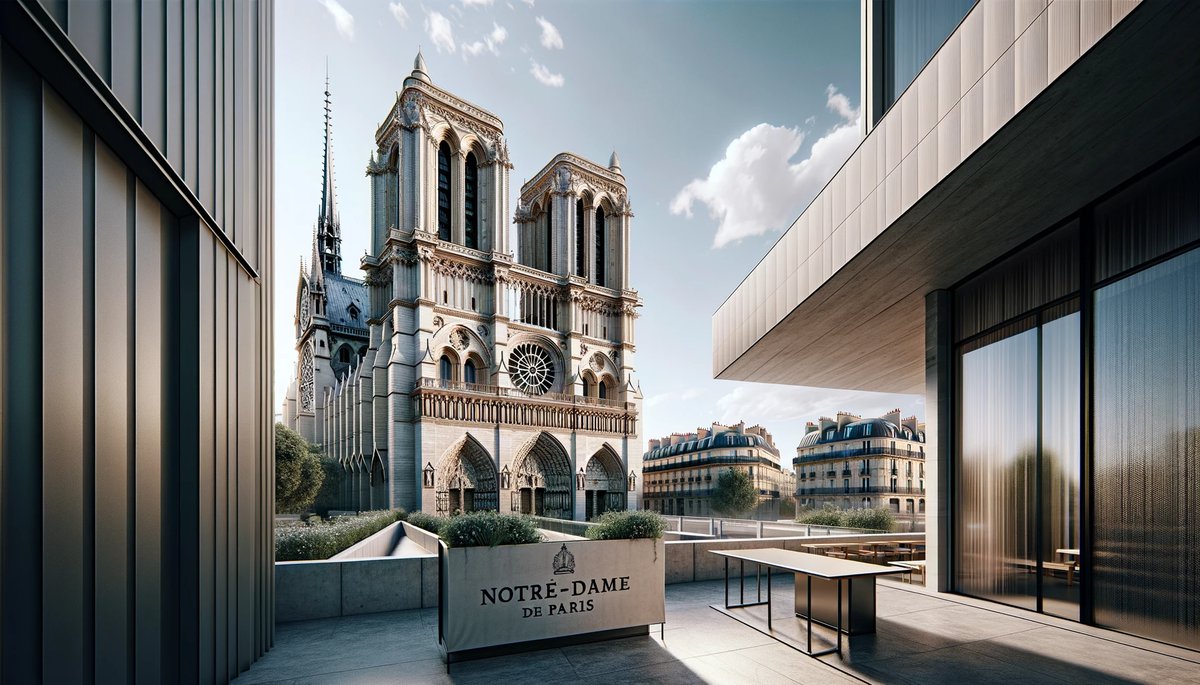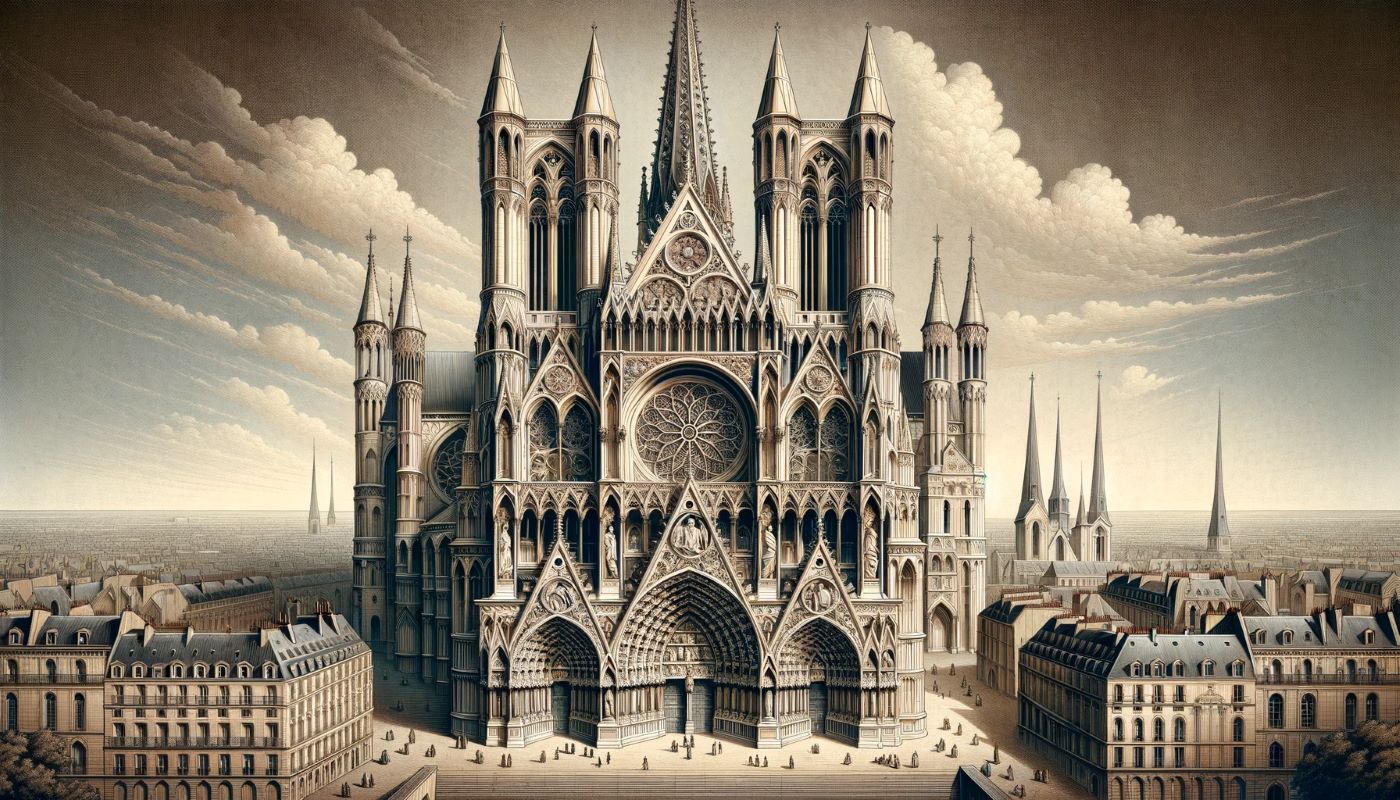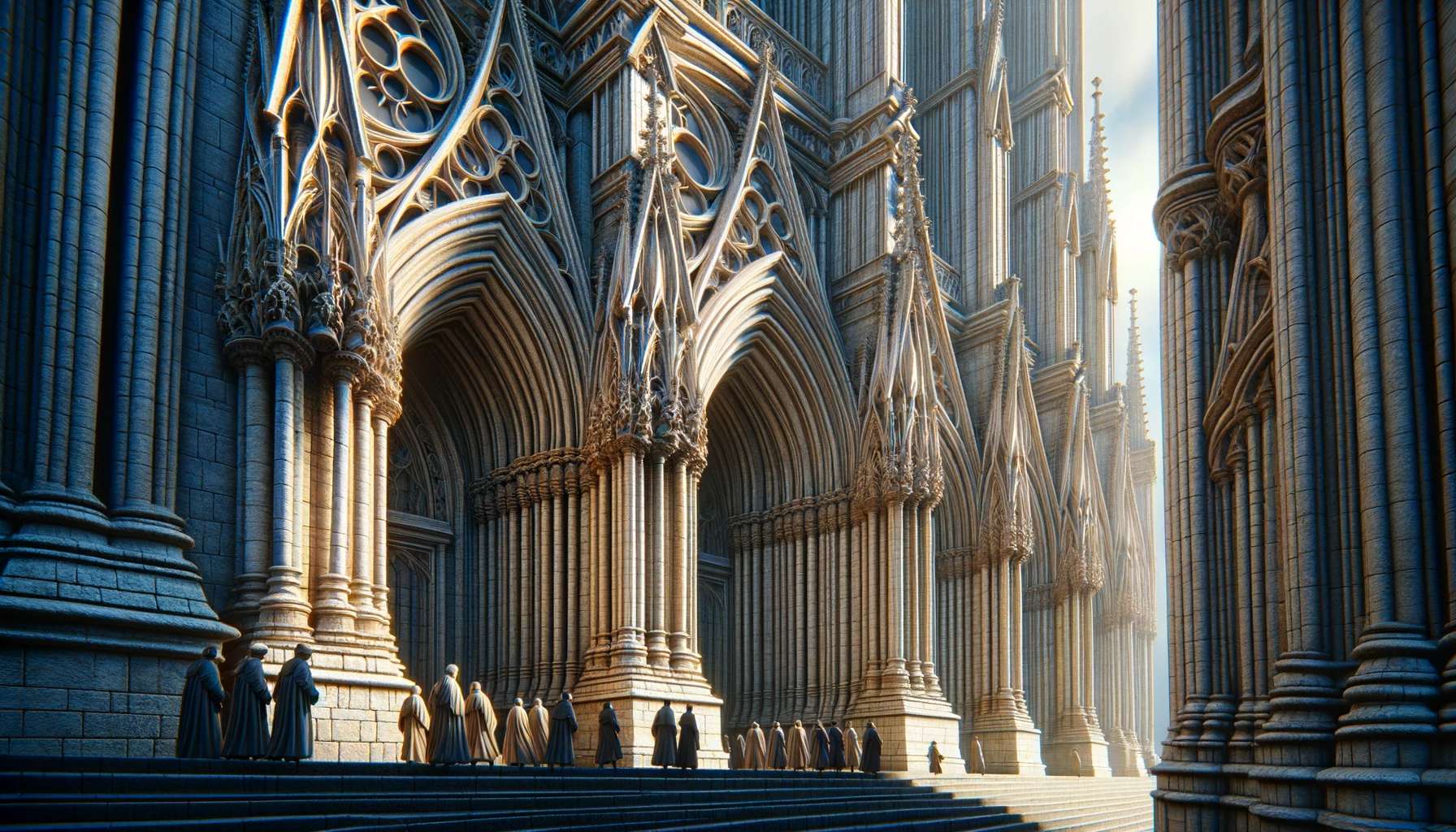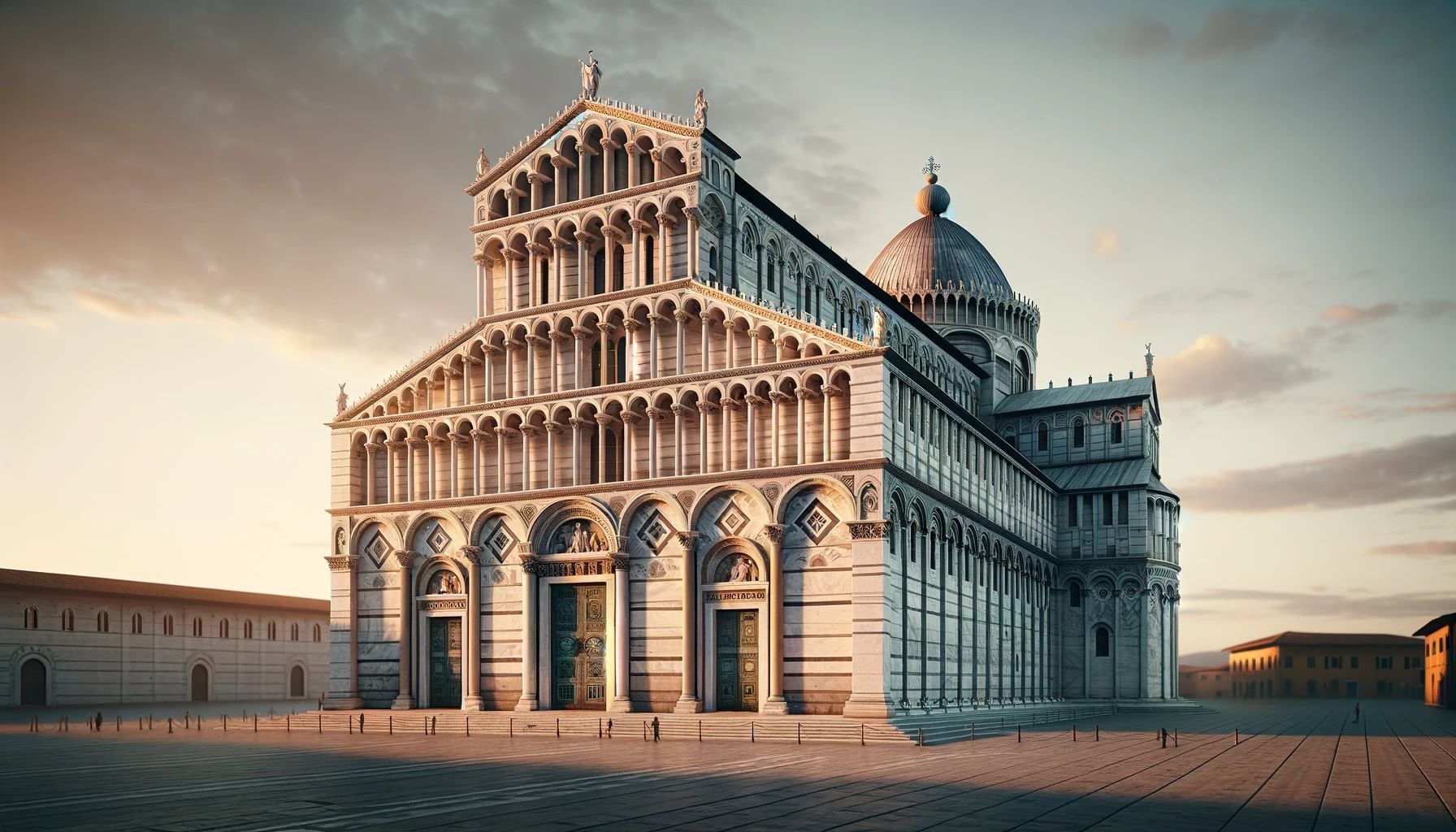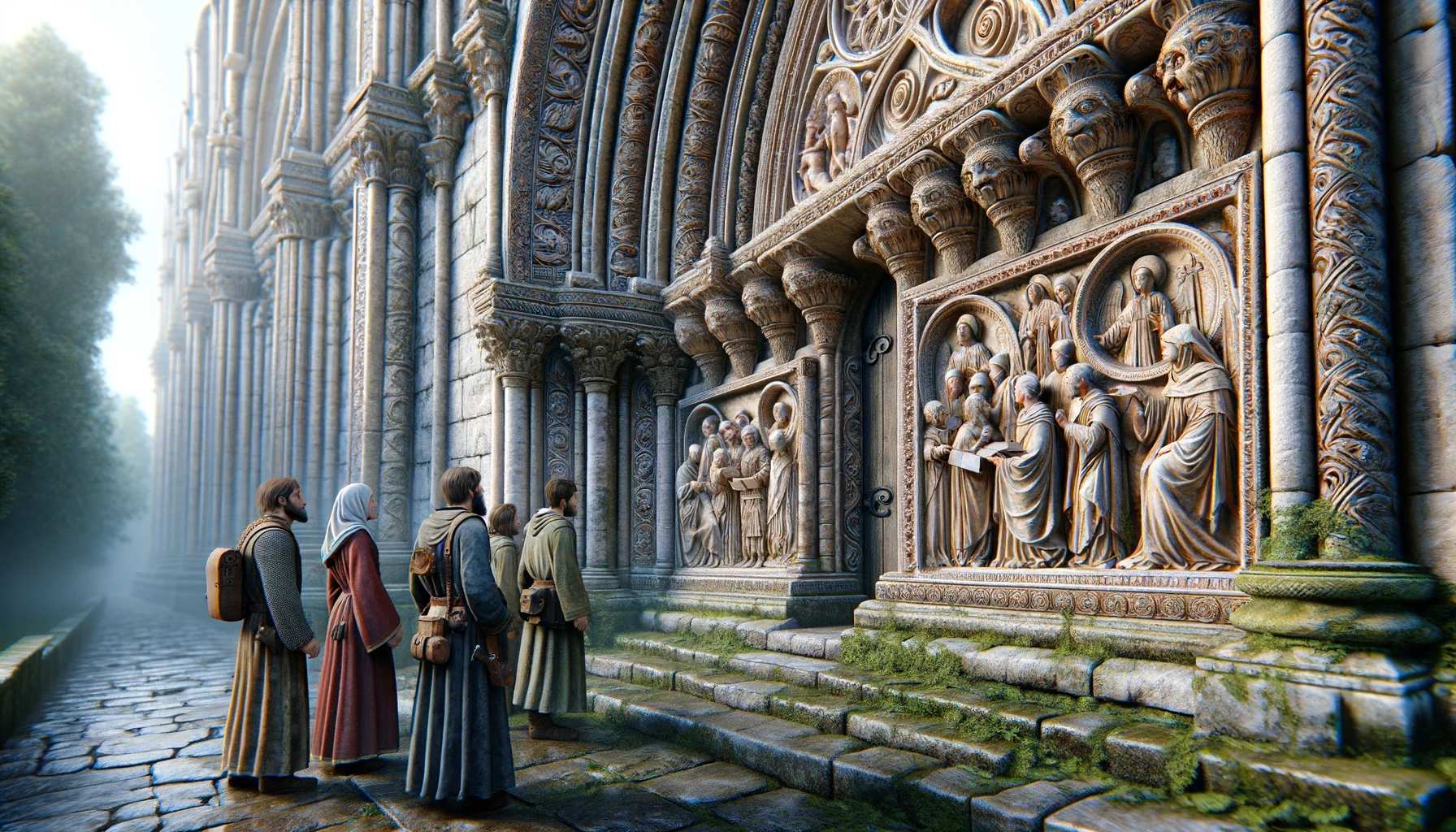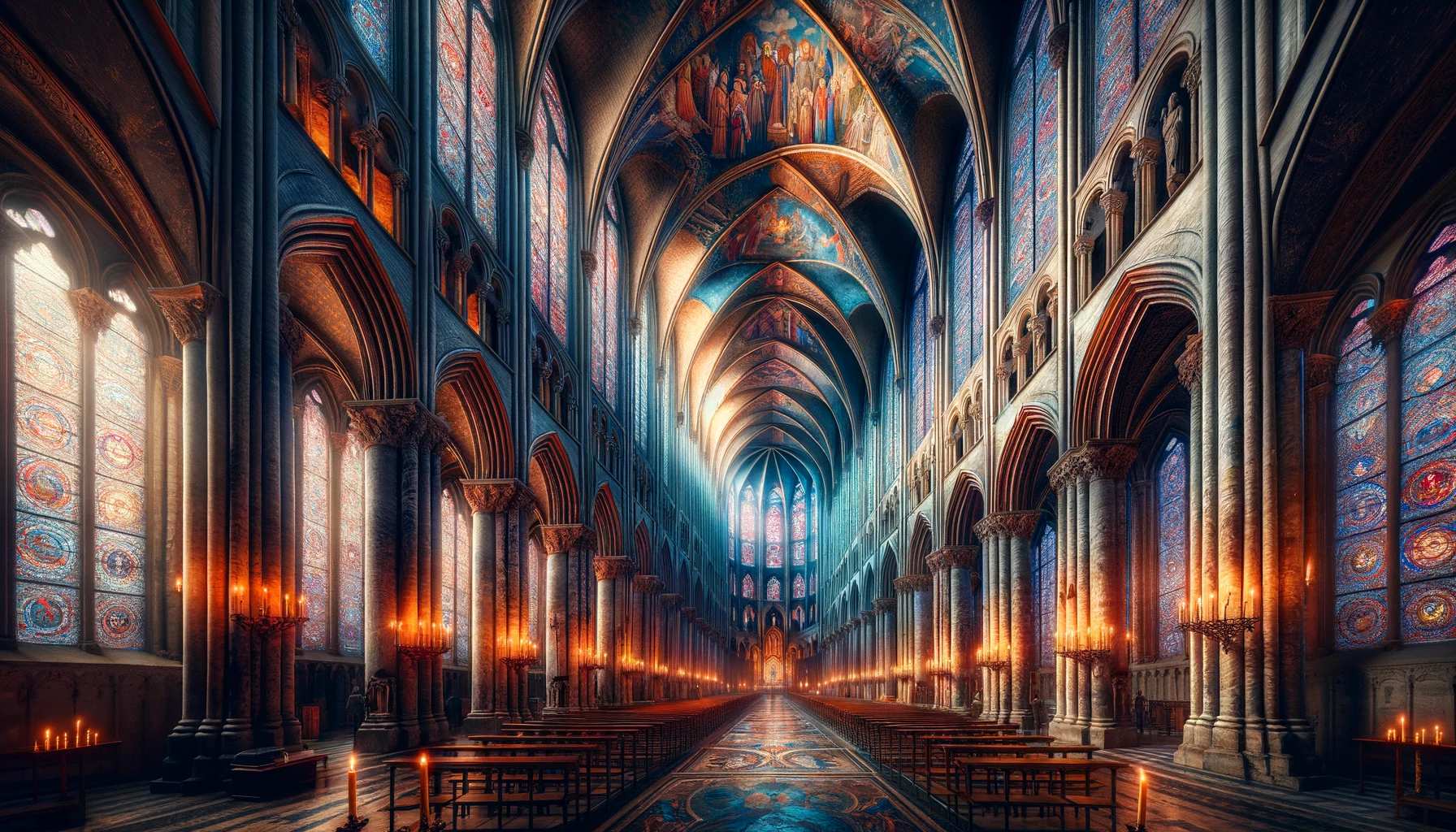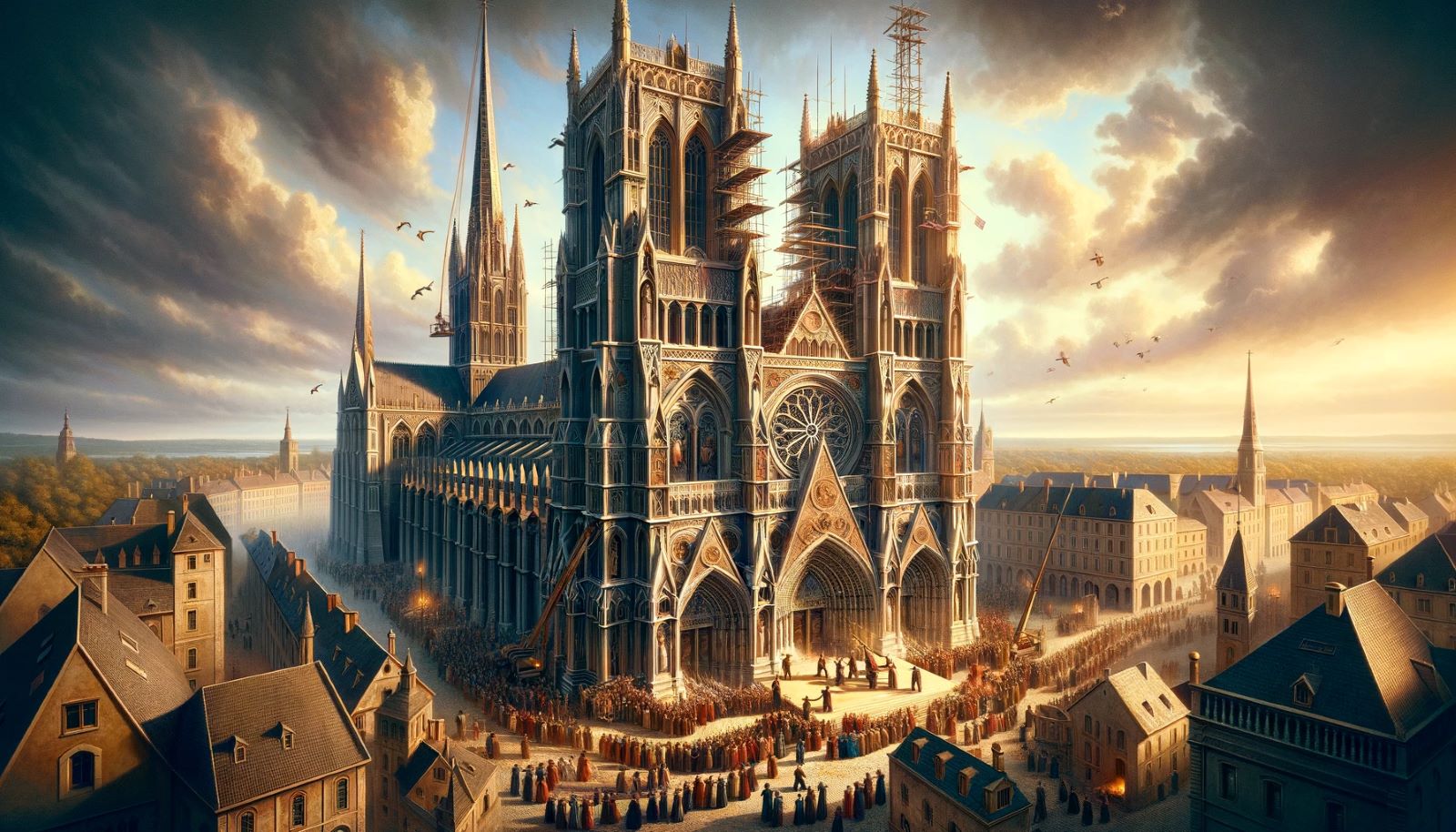Home>Arts and Culture>How Did The Architecture Of The Gothic Cathedral Reflect Medieval Religious Values?


Arts and Culture
How Did The Architecture Of The Gothic Cathedral Reflect Medieval Religious Values?
Published: February 16, 2024
Peter Smith, Editorial Director at Christian.net, combines deep insights into faith, politics, and culture to lead content creation that resonates widely. Awarded for his contributions to religious discourse, he previously headed a major organization for religious communicators, enhancing dialogue on faith's societal impacts.
Explore how the Gothic cathedral's architecture embodied the religious beliefs of the medieval era. Uncover the intricate connection between art, culture, and spirituality.
(Many of the links in this article redirect to a specific reviewed product. Your purchase of these products through affiliate links helps to generate commission for Christian.net, at no extra cost. Learn more)
Table of Contents
Introduction
The architecture of the Gothic cathedral stands as a testament to the ingenuity, devotion, and spiritual fervor of the medieval era. These magnificent structures, with their soaring spires, intricate sculptures, and kaleidoscopic stained glass windows, continue to captivate and inspire awe in the modern world. However, beyond their aesthetic appeal, Gothic cathedrals serve as profound reflections of the religious values and beliefs that permeated medieval society.
In this article, we will embark on a captivating journey through the intricate labyrinths of Gothic architecture, unraveling the profound symbolism and spiritual significance woven into every arch, pillar, and vault. We will delve into the historical context that gave rise to this architectural marvel, exploring the societal and religious forces that shaped its evolution. Furthermore, we will illuminate the intricate symbolism embedded within the design elements of these sacred edifices, shedding light on the profound spiritual narratives that unfold within their hallowed walls.
As we navigate through the ethereal beauty of Gothic cathedrals, we will uncover the pivotal role of light and space in creating an otherworldly ambiance that transcends the earthly realm. Additionally, we will unravel the significance of sculpture and stained glass as powerful conduits for conveying religious narratives and moral teachings to the masses. Ultimately, we will unveil how the Gothic cathedral, with its awe-inspiring grandeur and spiritual symbolism, encapsulates the essence of medieval religious values and beliefs.
Join us on this enlightening expedition as we unravel the enigmatic allure of Gothic architecture and gain a deeper understanding of how these sacred structures mirror the profound religious ethos of the medieval world.
Read more: What Did A Gothic Cathedral Symbolize
The Rise of Gothic Architecture
The emergence of Gothic architecture marked a pivotal shift in the realm of sacred edifices, ushering in an era of unprecedented innovation and spiritual grandeur. The roots of this architectural revolution can be traced back to 12th-century France, a time when profound societal and religious transformations were underway. The term "Gothic" was initially used as a derogatory label, denoting the perceived barbarism of the style in contrast to the classical Romanesque architecture that preceded it. However, over time, this style evolved into a symbol of spiritual transcendence and divine splendor.
One of the defining features of Gothic architecture was its verticality, a departure from the predominantly horizontal emphasis of Romanesque structures. This vertical orientation, characterized by soaring spires and lofty vaults, was not merely a matter of aesthetics; it embodied a profound theological significance. The upward thrust of Gothic cathedrals was intended to draw the gaze of worshippers towards the heavens, symbolizing the aspiration for spiritual elevation and communion with the divine.
The development of the pointed arch, a hallmark of Gothic design, facilitated the construction of taller and more expansive interiors, enabling architects to create ethereal spaces suffused with celestial light. This newfound emphasis on height and luminosity was a testament to the evolving religious sensibilities of the era, reflecting a deep yearning for transcendence and spiritual enlightenment.
Furthermore, the advent of the flying buttress allowed for the construction of larger windows, paving the way for the infusion of radiant stained glass panels that would become emblematic of Gothic cathedrals. These colossal windows served as luminous tapestries, suffusing the sacred interiors with a kaleidoscope of colors and ethereal radiance, thereby transforming the architectural space into a transcendent realm where the divine and the mortal converged.
The rise of Gothic architecture was intrinsically linked to the burgeoning power and influence of the Catholic Church, which sought to assert its spiritual authority through the construction of awe-inspiring cathedrals that would inspire reverence and piety among the masses. The cathedral became not only a place of worship but also a visual manifestation of the Church's supremacy and the divine order it purported to uphold.
In essence, the ascendancy of Gothic architecture represented a profound fusion of artistic innovation, religious devotion, and societal aspirations, giving rise to sacred edifices that transcended the earthly realm and beckoned the faithful to partake in a transcendent spiritual experience. This architectural metamorphosis laid the foundation for a new chapter in the history of sacred art and architecture, leaving an indelible imprint on the spiritual landscape of medieval Europe.
Symbolism in Gothic Cathedral Design
The design of Gothic cathedrals is imbued with profound symbolism, serving as a visual tapestry that weaves together intricate narratives of religious doctrine and spiritual allegory. Every facet of these sacred edifices, from the soaring spires to the minutest sculptural details, carries layers of symbolic significance that resonate with the core tenets of medieval religious beliefs.
The towering spires of Gothic cathedrals, reaching towards the heavens, symbolize the aspiration for spiritual elevation and the yearning for communion with the divine. These ethereal structures, with their upward thrust, evoke a sense of transcendence, inviting worshippers to cast their gaze heavenward and contemplate the ineffable mysteries of the divine realm.
The intricate tracery of the stained glass windows, illuminated by the celestial light, serves as a metaphor for the divine illumination that permeates the spiritual realm. The vibrant hues and radiant patterns of the stained glass panels evoke a sense of ethereal splendor, enveloping the sacred space in a kaleidoscope of colors that symbolize the transcendent beauty of the divine presence.
The ribbed vaults, with their intricate network of intersecting ribs, symbolize the celestial order and the harmonious structure of the universe as envisioned by medieval theologians. These soaring vaults, with their ethereal grace, evoke a sense of celestial grandeur, reflecting the medieval belief in the divine symmetry and order that underpinned the cosmos.
The sculptural adornments adorning the façade and interior of Gothic cathedrals are replete with symbolic imagery, depicting biblical narratives, saints, and allegorical representations of virtues and vices. Every sculpted figure and relief carries a profound moral and spiritual significance, serving as visual parables that impart religious teachings and ethical lessons to the illiterate masses.
The labyrinthine layout of Gothic cathedrals, with their intricate chapels, ambulatories, and crypts, symbolizes the spiritual journey of the faithful, inviting them to embark on a symbolic pilgrimage through the sacred space. The architectural arrangement of these edifices mirrors the labyrinthine path of spiritual enlightenment, guiding worshippers through a transformative odyssey of faith and devotion.
In essence, the symbolism embedded within the design of Gothic cathedrals transcends mere ornamentation; it serves as a profound visual language that communicates the core tenets of medieval religious values and beliefs. These sacred edifices, with their intricate symbolism and spiritual allegory, stand as enduring testaments to the profound spiritual ethos that permeated the medieval world.
The Importance of Light and Space
The interplay of light and space within Gothic cathedrals transcends mere architectural elements; it embodies a profound spiritual symbolism that lies at the heart of medieval religious values. The infusion of celestial light into the sacred interiors of these edifices served as a metaphor for the divine illumination that permeates the spiritual realm. The expansive windows, adorned with vibrant stained glass panels, transformed the architectural space into a transcendent realm suffused with ethereal radiance, evoking a sense of otherworldly splendor that transcended the earthly domain.
The emphasis on luminosity within Gothic cathedrals was not merely a matter of aesthetics; it was a deliberate invocation of the divine presence, a manifestation of the medieval belief in the transcendent radiance of the divine. The kaleidoscopic hues of the stained glass windows, illuminated by the celestial light, symbolized the ineffable beauty of the divine realm, inviting worshippers to immerse themselves in a spiritual tapestry of transcendent splendor.
Furthermore, the ethereal play of light and shadow within the sacred space evoked a sense of the divine mystery, enveloping the faithful in an ambiance of spiritual transcendence. The interplay of light and space within Gothic cathedrals was a testament to the medieval yearning for spiritual enlightenment and communion with the divine, inviting worshippers to transcend the confines of the material world and partake in a transformative spiritual experience.
In addition to its symbolic significance, the manipulation of light and space within Gothic cathedrals engendered a sense of awe and reverence among the faithful, underscoring the grandeur and sanctity of the sacred space. The lofty vaults and expansive interiors, suffused with celestial light, evoked a sense of spiritual elevation, inviting worshippers to cast their gaze heavenward and contemplate the ineffable mysteries of the divine realm.
In essence, the importance of light and space within Gothic cathedrals transcended the realm of architectural design; it encapsulated the profound spiritual aspirations and religious yearnings of the medieval era. The interplay of celestial light and ethereal space within these sacred edifices beckoned the faithful to partake in a transcendent spiritual odyssey, inviting them to immerse themselves in the ineffable beauty and divine radiance that permeated the hallowed halls of the Gothic cathedral.
The Role of Sculpture and Stained Glass
The intricate sculptures adorning the façades and interiors of Gothic cathedrals played a pivotal role in conveying religious narratives and moral teachings to the largely illiterate medieval populace. Every sculpted figure, relief, and decorative element served as a visual parable, imparting profound spiritual and ethical lessons to the faithful. The sculptures depicted biblical narratives, saints, martyrs, and allegorical representations of virtues and vices, thereby serving as a didactic medium through which the core tenets of Christianity were elucidated. These sculptural adornments transcended mere ornamentation; they served as profound conduits for communicating the sacred narratives and moral imperatives that underpinned medieval religious values.
Furthermore, the kaleidoscopic stained glass windows of Gothic cathedrals assumed a transcendent role in conveying the divine radiance and spiritual illumination that permeated the sacred space. The vibrant hues and radiant patterns of the stained glass panels transformed the architectural interior into a luminous tapestry suffused with ethereal radiance. These colossal windows served as visual allegories of the divine realm, inviting worshippers to immerse themselves in a transcendent realm of celestial beauty. The stained glass panels depicted biblical scenes, hagiographic narratives, and allegorical representations of theological concepts, thereby serving as vibrant canvases through which the sacred stories and spiritual truths of Christianity were vividly portrayed.
In essence, the role of sculpture and stained glass within Gothic cathedrals transcended mere embellishment; it served as a profound medium for imparting religious teachings and spiritual narratives to the masses. The sculptures and stained glass panels transformed the sacred space into a visual symphony of divine allegory, inviting worshippers to contemplate the ineffable mysteries of the divine realm and partake in a transformative spiritual odyssey. Through their intricate artistry and profound symbolism, the sculptures and stained glass windows of Gothic cathedrals encapsulated the essence of medieval religious values, serving as enduring testaments to the spiritual fervor and artistic ingenuity of the era.
Read more: What Makes A Gothic Cathedral
The Cathedral as a Reflection of Medieval Religious Values
The Gothic cathedral stands as a profound reflection of the religious values and beliefs that permeated medieval society. Every facet of these sacred edifices, from their soaring spires to the minutest sculptural details, embodies the spiritual ethos and theological convictions that defined the medieval era. At its core, the cathedral serves as a tangible manifestation of the medieval worldview, encapsulating the profound spiritual aspirations, moral imperatives, and theological doctrines that underpinned the fabric of medieval religious life.
The architectural grandeur of Gothic cathedrals, with their soaring spires and celestial windows, embodies the medieval yearning for spiritual transcendence and communion with the divine. The vertical orientation of these edifices, reaching towards the heavens, symbolizes the aspiration to rise above earthly concerns and partake in a transformative spiritual odyssey. The cathedral, with its ethereal grace and celestial luminosity, beckons the faithful to cast their gaze heavenward and contemplate the ineffable mysteries of the divine realm.
Furthermore, the intricate symbolism woven into every aspect of Gothic cathedral design serves as a visual tapestry that communicates the core tenets of medieval religious values. The towering spires, radiant stained glass windows, and sculptural adornments depict biblical narratives, saints, and allegorical representations of virtues and vices, thereby imparting profound spiritual and ethical lessons to the largely illiterate medieval populace. The cathedral becomes a living testament to the sacred narratives and moral imperatives that shaped the religious consciousness of the era.
Moreover, the interplay of light and space within Gothic cathedrals evokes a sense of the divine mystery and spiritual transcendence, enveloping the faithful in an ambiance of awe and reverence. The infusion of celestial light, suffused with vibrant hues through stained glass panels, transforms the architectural space into a transcendent realm where the earthly and the divine converge. The cathedral becomes a sanctuary of spiritual enlightenment, inviting worshippers to immerse themselves in the ineffable beauty and divine radiance that permeate its hallowed halls.
In essence, the Gothic cathedral stands as a testament to the profound spiritual ethos of the medieval world, embodying the yearning for transcendence, the moral imperatives of Christianity, and the ineffable beauty of the divine realm. It serves as a tangible embodiment of the medieval religious values, inviting contemporary audiences to behold the spiritual fervor and artistic ingenuity that defined this transformative era.
Conclusion
In conclusion, the Gothic cathedral stands as a profound testament to the religious values and beliefs that permeated medieval society. From its soaring spires reaching towards the heavens to the intricate symbolism woven into every facet of its design, the cathedral embodies the spiritual ethos and theological convictions that defined the medieval era. It serves as a tangible manifestation of the medieval worldview, encapsulating the profound spiritual aspirations, moral imperatives, and theological doctrines that underpinned the fabric of medieval religious life.
The architectural grandeur of Gothic cathedrals, with their vertical orientation and celestial windows, symbolizes the medieval yearning for spiritual transcendence and communion with the divine. The cathedral beckons the faithful to cast their gaze heavenward and contemplate the ineffable mysteries of the divine realm, evoking a sense of awe and reverence.
Furthermore, the intricate symbolism woven into every aspect of Gothic cathedral design serves as a visual tapestry that communicates the core tenets of medieval religious values. The towering spires, radiant stained glass windows, and sculptural adornments depict biblical narratives, saints, and allegorical representations of virtues and vices, imparting profound spiritual and ethical lessons to the medieval populace.
Moreover, the interplay of light and space within Gothic cathedrals evokes a sense of the divine mystery and spiritual transcendence, enveloping the faithful in an ambiance of awe and reverence. The cathedral becomes a sanctuary of spiritual enlightenment, inviting worshippers to immerse themselves in the ineffable beauty and divine radiance that permeate its hallowed halls.
In essence, the Gothic cathedral stands as a living testament to the sacred narratives, moral imperatives, and spiritual yearnings that shaped the religious consciousness of the medieval world. It serves as a tangible embodiment of the medieval religious values, inviting contemporary audiences to behold the spiritual fervor and artistic ingenuity that defined this transformative era. The legacy of Gothic architecture endures as a profound testament to the enduring power of human creativity, devotion, and spiritual aspiration.
